

 Streamlined or personal?
Streamlined or personal?
What is it that makes a wine feel personal, as if it has a special character? It really has nothing to do with the price. Sometimes I get the impression that some winemakers have magic fingers. Or is it simply a question of good soil and micro climate, and clement weather? Having the right technology and technique?
Winemakers often speak about all the small details that are important to make the wine taste as it should. But there is no simple recipe for how to make a wine with character. Two growers can have totally different methods and yet both will get characterful and expressive wines. While other neighbours make streamlined unexciting wines.
We met many winemakers in Champagne recently when we were doing research for our forthcoming book (keep your eyes open). Some said “you can’t age a wine with zero dosage [added sugar]”. Others said “ I make my champagnes non-dosé [no added sugar] because that makes them more long-lived”. The exact same things were said about with and without malolactic fermentation. And in both cases the result was excellent.
Fortunately there are buyers for all sorts of wine, so variety is a good thing. And perhaps not all consumers agree on what is a characterful wine. For some certain traits can be off-putting whereas others go looking for exactly that. Who is right? Both.
We drink a lot of wine from the Languedoc and the southern Rhône Valley. It is rarely the top cuvées that are the most interesting, but rather the cheaper, “simpler” wines. Perhaps not the entry level, but the mid-register, before it goes to “prestige”. The wines that have been spared too much new oak and too much Syrah (which does not always work well here). Where instead carignan, grenache, and cinsault get to prove their worth. Grapes that are well-adapted to the region. Luckily more and more producers go looking for old, almost forgotten, varieties. That is often where the unique characters can be found.
Sometimes winemakers say that “it is easy to make a super-premium, prestige cuvée”. Very low yields, high concentration, lots of oak etc. That makes for impressive wines, but not always pleasurable.
But it is more difficult to make a really good and interesting “normal” wine.
The best answer is probably what also many winemakers say: “I want that when you taste my wine you will want to finish the whole bottle, not just taste a glass and say ‘wow, impressive’ and then leave the bottle to the side because it was overwhelming”.
Wine that you really want to drink, in other words!
Wine travel
Finally a few words on travel. We are just about to leave for this year’s first wine tour, to Chile and Argentina. Later this spring there are still some spaces available on the Bordeaux tour.
We have just finished the autumn program where we have a few new things: Alentejo in Portugal, and Piedmont in Italy. Plus of course Bordeaux and the Douro Valley. More info below.
Britt & Per
PS: Recommend to your friends to read the Brief!
– – – – –
What’s on at BKWine Tours
Winter / spring 2017
- Chile and Argentina in South America, January 28 – February 12, 2017 (fully booked)
- South Africa, February 24 – March 7, 2017, with Safari add-on and Golf add-on (fully booked)
- Champagne, April 19-23, 2017
- Bordeaux, May 3-7, 2017
Autumn / fall 2017
- Bordeaux, September 27 – October 1
- Piedmont, wine and truffles, October 18-22
- Douro Valley, Portugal, October 18-22
For more information please contact us on email or on phone (we’re on French time), or go to our wine travel site on www.bkwinetours.com!
We also make custom designed wine tours – on-demand tours for you and a group of friends, for your company (maybe to scout new winegrowers?), for a special event… We can combine winery visits and wine touring with other activities: gastronomic workshops, visit to an oyster farm, truffles hunting, cheese making, and more. More info on the custom designed and bespoke BKWine wine tours and travel here!
Read our book(s)
We have written several wine books, nine at the last count. One of them has been translated to English; the others are (so far) only available in Swedish. This is the one that is available in English: Biodynamic, Organic and Natural Winemaking, Sustainable Viticulture and Viniculture
All our books are on wine, but on different subjects: wines of the Languedoc, wine growing and wine making, the wines of France, Tuscany, Bordeaux, Piedmont, Burgundy, Champagne. Several have won prestigeous prizes and awards. Read more on our wine books.
From the World of Wine
In Brief
In short, news and stuff from the world of wine.
French food and wine with geographic origin
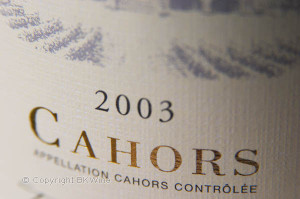 In France there is a variety of food products that are sold with a geographical origin. Among these products wine is the leader. 94% of all French wine is labelled SIQO, which stands for signe d’identification de la qualité et de l’origine, which means designation of quality and origin. There are two SIQO for wine: AOP/AOC and IGP. The IGP designation replaced the vin de pays category in 2009. Vin de Pays wines had an origin but they were considered as table wines, not, like the IGP, as quality wines. In France, there are currently 366 AOP/AOC and 74 IGP.
In France there is a variety of food products that are sold with a geographical origin. Among these products wine is the leader. 94% of all French wine is labelled SIQO, which stands for signe d’identification de la qualité et de l’origine, which means designation of quality and origin. There are two SIQO for wine: AOP/AOC and IGP. The IGP designation replaced the vin de pays category in 2009. Vin de Pays wines had an origin but they were considered as table wines, not, like the IGP, as quality wines. In France, there are currently 366 AOP/AOC and 74 IGP.
Other food products can also have an AOP or an IGP. There are for instance 50 AOP for milk products, mostly for butter and cheese. Two delicious birds have their own AOP, chicken and turkey from Bresse. 126 different food products have an IGP. Furthermore there is a SIQO designation called Label Rouge, which was created in the 1960s, 30 years before the AOP and IGP designations were introduced for food. All SIQO are governed by the organization INAO, l’Institut national de l’origine et de la qualité. Read more inao.gouv.fr
Have a glass of bubbly while waiting for your flight
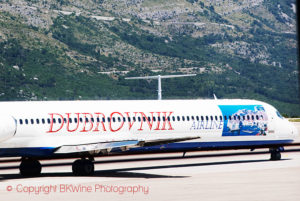 It varies pretty much how fun it is to spend a few hours at an airport. Now it has become a bit more pleasant at Fiumicino Rome and Milan Malpensa, at least for those who like sparkling wines. The family Lunelli, who runs the company Ferrari, has recently opened a wine bar, Ferrari Spazio Bollicine, at these two airports. Ferrari is a very famous sparkling wine from Trentino. The wine bars serve not only good wines but also fine Italian delicacies, like cured ham from Parma, mozzarella from Campania, meat from Piedmont. The idea is to offer non-complicated dishes with high quality ingredients. A winning concept, we believe. And soon we will surely see Ferrari wine bars in airports outside of Italy.
It varies pretty much how fun it is to spend a few hours at an airport. Now it has become a bit more pleasant at Fiumicino Rome and Milan Malpensa, at least for those who like sparkling wines. The family Lunelli, who runs the company Ferrari, has recently opened a wine bar, Ferrari Spazio Bollicine, at these two airports. Ferrari is a very famous sparkling wine from Trentino. The wine bars serve not only good wines but also fine Italian delicacies, like cured ham from Parma, mozzarella from Campania, meat from Piedmont. The idea is to offer non-complicated dishes with high quality ingredients. A winning concept, we believe. And soon we will surely see Ferrari wine bars in airports outside of Italy.
Ferrari was founded in the early 1900s by Giulio Ferrari and is, since the 1950s, run by the dynamic family Lunelli. The family makes wine also in Tuscany and at the spectacular Tenuta Castelbuono in Umbria. Read more ferraritrento.it
A new and exciting wine travel autumn is ready for you
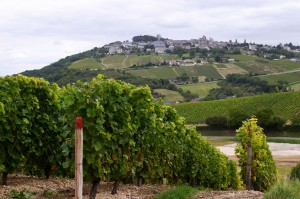 We have finalised all the planning for the coming autumn / fall wine tours. You can read more on the program further down in the section on wine travel. We have two new destinations to offer you this year. Piedmont in norther Italy with wine and truffles, including a cooking workshop. And also Alentejo, the Portuguese wine region that is close to Lisbon, an exciting and very different wine region. There are also two classics in the autumn: Bordeaux and the Douro Valley in Portugal. (I might add that we also do a lot of custom tours and tours for Scandinavians. All in all we do some 30 wine tours over the year!)
We have finalised all the planning for the coming autumn / fall wine tours. You can read more on the program further down in the section on wine travel. We have two new destinations to offer you this year. Piedmont in norther Italy with wine and truffles, including a cooking workshop. And also Alentejo, the Portuguese wine region that is close to Lisbon, an exciting and very different wine region. There are also two classics in the autumn: Bordeaux and the Douro Valley in Portugal. (I might add that we also do a lot of custom tours and tours for Scandinavians. All in all we do some 30 wine tours over the year!)
Also a quick reminder of the Bordeaux wine tour in May that has a few places left. Book now. Read more on all this further down in the section on wine travel or on bkwinetours.com.
Cultivated natural yeast?
Yeast, cultivated or natural, is something that a lot of people feel strongly about. Both consumers and producers. Although the vast majority of producers use cultivated yeast, the “natural” yeast enthusiasts have been so convincing, or overwhelming, that some wine consumers today mistakenly believe that natural yeast is the only true path to quality. “Natural” yeast is actually a misnomer. All yeast is natural. “Wild” yeast would be a better term.
A company called Biocepage now offers a possibility for producers who want to use their own natural yeast, but at the same time have a stable and safe fermentation. The company isolates the “natural” yeast from the producer’s own vineyard, either directly from grapes or from must that ferments spontaneously. Yeast strains that show defects, or unwanted characteristics, are rejected. The best yeast strains are maintained and propagated and given back to the producer. What do we call this yeast, natural or cultivated? Read more biocepage.com.
Cru Artisan: small chateaux in Médoc
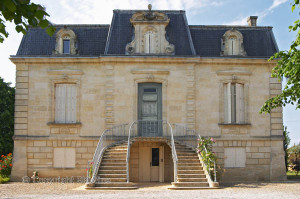 Cru artisan in the Médoc has made a comeback. This year, a new regulatory framework will be published. The Cru Artisan classification existed in the Médoc already in the 1800s. At the time it was small estates where the owner himself was the winemaker. In order to support the family he often also had another profession, maybe baker, cooper, saddler or something similar (activities that are called “artisan” in France). Over time this classification was forgotten. The big chateaux demanded, and received, the attention. Cru Artisan did not have the same ring as Grand Cru Classé.
Cru artisan in the Médoc has made a comeback. This year, a new regulatory framework will be published. The Cru Artisan classification existed in the Médoc already in the 1800s. At the time it was small estates where the owner himself was the winemaker. In order to support the family he often also had another profession, maybe baker, cooper, saddler or something similar (activities that are called “artisan” in France). Over time this classification was forgotten. The big chateaux demanded, and received, the attention. Cru Artisan did not have the same ring as Grand Cru Classé.
But the small chateaux didn’t give up and in 1994, the EU recognized Cru Artisan as a name permitted to put on the label. In 1989 the association Crus Artisans du Médoc was founded. The chateaux are still small and the owner himself must be involved in the daily work in the vineyard. There are around 50 Cru Artisan chateaux in the Médoc. Read more agence-fleurie.com.
I don’t think I can promise any Cru Artisan, but I can promise many fantastic wines and gastronomic food on the wine tour to Bordeaux this spring, or if you prefer Bordeaux in the autumn.
Domaine de la Vieille Forge Riesling Grand Cru Sporen Alsace 2013 | Henrik’s Wine of the Month
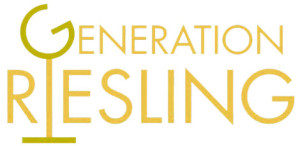 Why a riesling? A riesling is a riesling is a riesling. No, no, no! This wine is simply delicious and is a perfect paring served with for example a white fish or seafood like some nice prawns. The wine has a very attractive bouquet with complexity and citrus, some mint and classic riesling petroleum. On the palate it is dry and has a lot of fresh minerals, citrus, and not-quite-ripe pears. The finish is long and delicious and will be sure to enhance any dish served for dinner. Read more on Domaine de la Vieille Forge. .
Why a riesling? A riesling is a riesling is a riesling. No, no, no! This wine is simply delicious and is a perfect paring served with for example a white fish or seafood like some nice prawns. The wine has a very attractive bouquet with complexity and citrus, some mint and classic riesling petroleum. On the palate it is dry and has a lot of fresh minerals, citrus, and not-quite-ripe pears. The finish is long and delicious and will be sure to enhance any dish served for dinner. Read more on Domaine de la Vieille Forge. .
Andreas Larsson raises confidence in Languedoc
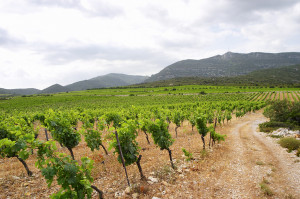 There is a shortage of cheap French wine, which means that some supermarket chains in France are importing Spanish table wine. This has led to criminal actions by some militant winemakers in the Languedoc. But it has also led to more serious measures. The producers’ association in Languedoc, the CIVL, has decided to raise the membership fees to be able to work actively to defend the Languedoc wines in the supermarkets. Admittedly, even the cheapest French wines will never be as cheap as the Spanish, but that might be just as well. Instead the marketing efforts will have to focus on origin and on quality.
There is a shortage of cheap French wine, which means that some supermarket chains in France are importing Spanish table wine. This has led to criminal actions by some militant winemakers in the Languedoc. But it has also led to more serious measures. The producers’ association in Languedoc, the CIVL, has decided to raise the membership fees to be able to work actively to defend the Languedoc wines in the supermarkets. Admittedly, even the cheapest French wines will never be as cheap as the Spanish, but that might be just as well. Instead the marketing efforts will have to focus on origin and on quality.
Andreas Larsson, the Swede who was named “the world’s best sommelier” in 2007, was recently in the Languedoc and tasted IGP wines. At first he was reluctant to come but then he was amazed by the quality. This strengthened the confidence of the Languedoc producers. So Spaniards beware, the war of the supermarket shelves is about to start. At least this is better than emptying Spanish wine trucks at night. And more along the lines of what these good wines deserve. Read more vitisphere.com
A few notes on Domaine Alexandre in Chablis
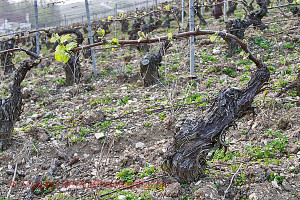 We recently had the opportunity to taste the range of wines from Domaine Alexandre in Chablis (they have just been launched by one of the Swedish internet wine merchants), and we quite liked them. The property is in the small village of La Chapelle-Vaupelteigne just north of Chablis itself. It is Olivier Alexandre and his father Guy who run it. The 13 hectares of vineyards are located around the village and in three other communes: Beines, Lignorelles and Villy. The wines are crisp, dry and without any oak. Some tasting notes:
We recently had the opportunity to taste the range of wines from Domaine Alexandre in Chablis (they have just been launched by one of the Swedish internet wine merchants), and we quite liked them. The property is in the small village of La Chapelle-Vaupelteigne just north of Chablis itself. It is Olivier Alexandre and his father Guy who run it. The 13 hectares of vineyards are located around the village and in three other communes: Beines, Lignorelles and Villy. The wines are crisp, dry and without any oak. Some tasting notes:
Domaine Alexandre Chablis 2014 Premier Cru Fourchaume: Quite full-bodied, with some ”fat” and citrus aromas, flowers. A nice and typical Chablis (~24 euro, Swedish retail price estimate).
Domaine Alexandre Chablis 2014 Vieilles Vignes: Typical chardonnay character with a good body and fresh acidity. The vines were planted by Olivier’s grandfather and are now 50 years old. (~21 euro)
Domaine Alexandre Petit Chablis 2015: Shy on the nose with fresh lemon character, a good acidity and typical steeliness on the finish. (~17 euro)
BKWine wine tours in media
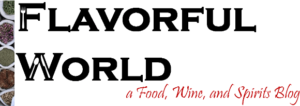 Everyone needs some encouragement once in a while. We too. We get a big kick every time we see someone mentioning our wine tours (or our books, see other news flash). This month two articles have popped up on our tours (read more on the links):
Everyone needs some encouragement once in a while. We too. We get a big kick every time we see someone mentioning our wine tours (or our books, see other news flash). This month two articles have popped up on our tours (read more on the links):
Flavorful World: These excursions will take travelers inside two renowned classic French wine regions, touring Champagne in April and Bordeaux in May.
RealBusiness: Business networking is often done over a beverage or two, so what better way to provide a corporate delight than in the form of a luxury wine tour in France this spring.
Thank you both. We look forward to more wine enthusiasts on our tours.
What the press says about our new books on Piedmont and Burgundy
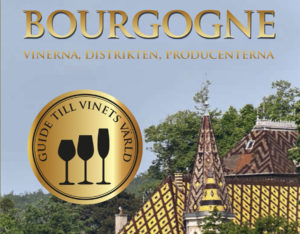 Last autumn we had two new books published in the series Guide to the World of Wine:
Last autumn we had two new books published in the series Guide to the World of Wine:
- Piedmont
- Burgundy
With the two previous books, on Bordeaux and Tuscany, the series now has four books. We have had several press mentions and book reviews of the series. Although the books are (for the moment) only published in Swedish, I cannot resist quoting some of the mentions.
Read more on these reviews here: What the press says about our new books on Piedmont and Burgundy.
Features
Features that we have published during the past month, with lots of reading for you.
Unusual and delicious wines from the Australian Tahbilk Estate
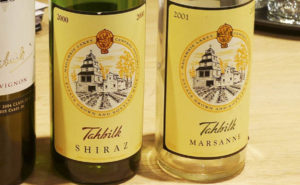 “Tahbilk Estate was founded in 1860 in the Nagambie Region in central Victoria in Australia, and has almost always impressed me, delivering very affordable white wines from the Rhone grape Marsanne. For around ten euros it is wines that can be aged for several decades! I have also been impressed by their “Museum Series” with older red vintages that I’ve tried at the London Wine Fair over the years. The winery and vineyards is since 1925 in the hands of the Purbrick family and today it was Alister Pubrick, the fourth generation, that led the tasting.”
“Tahbilk Estate was founded in 1860 in the Nagambie Region in central Victoria in Australia, and has almost always impressed me, delivering very affordable white wines from the Rhone grape Marsanne. For around ten euros it is wines that can be aged for several decades! I have also been impressed by their “Museum Series” with older red vintages that I’ve tried at the London Wine Fair over the years. The winery and vineyards is since 1925 in the hands of the Purbrick family and today it was Alister Pubrick, the fourth generation, that led the tasting.”
Read more on BKWine Magazine on this exciting wine tasting in the article by Roland Eriksson: Unusual and delicious wines from the Australian Tahbilk Estate.
Tasting Domaine Drouhin Oregon wines, Dundee Hills
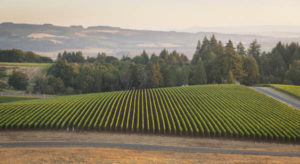 BKWine Magazine’s guest writer is again out and about exploring wine in Oregon: “Véronique Drouhin-Boss’s wines unfold on the palate with a lithesome charm, offering attractive pairing options. These tasting notes are a follow up to the earlier article on The French woman of Oregon, Véronique Drouhin Boss of Roserock Drouhin Oregon. Amazingly, these wines run between $35 and $45, tremendous finds for any Grand Cru or premier Willamette Valley Pinot Noir lover. Moreover, they age beautifully, a bonus for collectors.”
BKWine Magazine’s guest writer is again out and about exploring wine in Oregon: “Véronique Drouhin-Boss’s wines unfold on the palate with a lithesome charm, offering attractive pairing options. These tasting notes are a follow up to the earlier article on The French woman of Oregon, Véronique Drouhin Boss of Roserock Drouhin Oregon. Amazingly, these wines run between $35 and $45, tremendous finds for any Grand Cru or premier Willamette Valley Pinot Noir lover. Moreover, they age beautifully, a bonus for collectors.”
Read the continuation of LM Archer’s article on BKWine Magazine: Tasting Domaine Drouhin Oregon wines, Dundee Hills.
Corton-Charlemagne 2014, 2006, 2001, from Bonneau du Martray
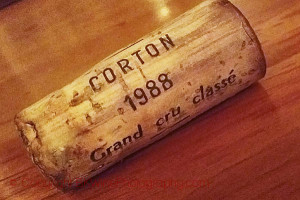 “The largest grand cru vineyard in Burgundy’s is the Corton hill. One of the largest vineyard owner on the Corton hill, Domaine Bonneau du Martray, is located in the village of Pernand-Vergelesses. They own 11 hectares, of which 9.5 ha of Chardonnay is used to produce the Corton-Charlemagne and 1.5 hectares of pinot noir is used to produce red Corton. Only these two grand cru wines are produced.”
“The largest grand cru vineyard in Burgundy’s is the Corton hill. One of the largest vineyard owner on the Corton hill, Domaine Bonneau du Martray, is located in the village of Pernand-Vergelesses. They own 11 hectares, of which 9.5 ha of Chardonnay is used to produce the Corton-Charlemagne and 1.5 hectares of pinot noir is used to produce red Corton. Only these two grand cru wines are produced.”
Few have the opportunity to taste these exclusive wines. BKWine Magazine’s reporter Tomas Eriksson dove in at the deep end at a recent tasting with the wines from this famous Burgundy producer. Read more: Corton-Charlemagne 2014, 2006, 2001, from Bonneau du Martray.
A pioneer on the Etna volcano, Pietradolce in six vintages
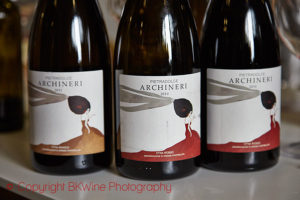 BKWine magazine’s Asa Johansson was there. In the last few years Etna wines has become the talk of the town and wines from the volcano are making a big success around the world. Producers from other parts of Sicily and also from other regions are investing in new vineyards on the volcano. There’s a lot of attention on Etna. One of Etna’s top producers, Pietradolce, had its first ever vertical tasting of the estate’s flagship wine, the Archineri, at the food and wine fair Taormina Gourmet in Sicily.
BKWine magazine’s Asa Johansson was there. In the last few years Etna wines has become the talk of the town and wines from the volcano are making a big success around the world. Producers from other parts of Sicily and also from other regions are investing in new vineyards on the volcano. There’s a lot of attention on Etna. One of Etna’s top producers, Pietradolce, had its first ever vertical tasting of the estate’s flagship wine, the Archineri, at the food and wine fair Taormina Gourmet in Sicily.
BKWine Magazine’s Asa Johansson was there. Read more: A pioneer on the Etna volcano, Pietradolce in six vintages
More exclusive Burgundies from Comte Georges de Vogüé, with an odd white
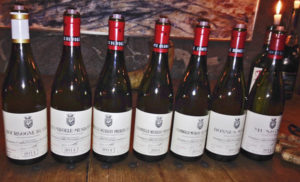 “Comte Georges de Vogüé is a very renowned Burgundy producer in the village of Chambolle-Musigny with 12.5 ha of vineyards, of which 9.9 ha is located in the grand cru vineyards Musigny and Bonnes-Mares. With 7.2 hectares de Vogüé is by far the largest vineyard owner in Musigny, the AOP that usually give rise to the most elegant and perfumed red grand cru wines of Burgundy. In addition, their premier cru holding includes 0.56 ha Chambolle-Musigny Les Amoureuses, which is one of a handful of premier cru vineyards many think ought to be grand crus. The average “level” of their vineyard holdings is thus very high.”
“Comte Georges de Vogüé is a very renowned Burgundy producer in the village of Chambolle-Musigny with 12.5 ha of vineyards, of which 9.9 ha is located in the grand cru vineyards Musigny and Bonnes-Mares. With 7.2 hectares de Vogüé is by far the largest vineyard owner in Musigny, the AOP that usually give rise to the most elegant and perfumed red grand cru wines of Burgundy. In addition, their premier cru holding includes 0.56 ha Chambolle-Musigny Les Amoureuses, which is one of a handful of premier cru vineyards many think ought to be grand crus. The average “level” of their vineyard holdings is thus very high.”
Read more on these rare Burgundies in Tomas Eriksson’s article on BKWine Magazine: More exclusive Burgundies from Comte Georges de Vogüé, with an odd white.
Biodynamic Wine by Monty Waldin | book review
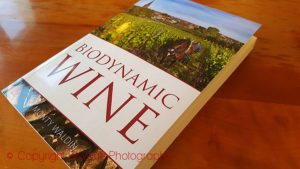 “For those of you who really want to know how a biodynamic wine producer work in the vineyard, and also in the cellar, this book is indispensable. Monty Waldin is a specialist. He believes in biodynamic agriculture and although you, as a reader, may doubt some of the things he write, there is no denying that Monty has a wide experience of different kinds of viticulture, both conventional, organic and biodynamic.”
“For those of you who really want to know how a biodynamic wine producer work in the vineyard, and also in the cellar, this book is indispensable. Monty Waldin is a specialist. He believes in biodynamic agriculture and although you, as a reader, may doubt some of the things he write, there is no denying that Monty has a wide experience of different kinds of viticulture, both conventional, organic and biodynamic.”
Read the resto of Britt’s review of Monty Waldin’s book on BKWine Magazine: Biodynamic Wine by Monty Waldin | book review.
Combining wine and food, starting from the wine. Is it possible? A Rhône experiment
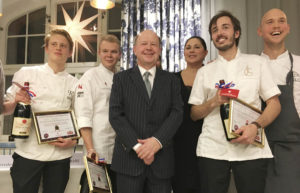 Four young Swedish chefs picked a wine from two districts in southern France, Lirac and Crozes-Hermitage. Based on the chosen wine they composed a main course where the main ingredient was deer saddle. The recommended vegetables were cabbage and Jerusalem artichoke. When combining food and wine the starting point is most of the times the food. In this case, a cooking competition arranged around Rhône wines, the situation was the contrary. The wine was chosen first and then four young Swedish chefs prepared a dish they thought would fit.
Four young Swedish chefs picked a wine from two districts in southern France, Lirac and Crozes-Hermitage. Based on the chosen wine they composed a main course where the main ingredient was deer saddle. The recommended vegetables were cabbage and Jerusalem artichoke. When combining food and wine the starting point is most of the times the food. In this case, a cooking competition arranged around Rhône wines, the situation was the contrary. The wine was chosen first and then four young Swedish chefs prepared a dish they thought would fit.
BKWine Magazine’s reporter Henrik Stadler reports: Combining wine and food, starting from the wine. Is it possible? A Rhône experiment.
A Legendary Wine: Commandaria From Cyprus | Britt on Forbes
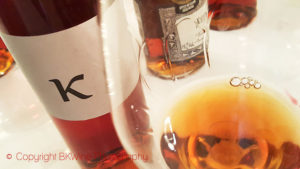 There are few wines that I would call legendary. The sweet Commandaria from Cyprus is one. Some people say it is the world’s oldest wine. Perhaps that is so. It has in any case been around long enough and has probably not changed significantly over the years. The wine became widely known in the Middle Ages when it also got its name. But most likely, the wine was made long before that. In 1191 King Richard I (called the Lionheart) departed on the Third Crusade. He passed Cyprus on the way to the Holy Land and he conquered the island which was later purchased by the Knights Templar. The Knights settled on a place on the island that they called Commandaria. The local wine was given the same name.
There are few wines that I would call legendary. The sweet Commandaria from Cyprus is one. Some people say it is the world’s oldest wine. Perhaps that is so. It has in any case been around long enough and has probably not changed significantly over the years. The wine became widely known in the Middle Ages when it also got its name. But most likely, the wine was made long before that. In 1191 King Richard I (called the Lionheart) departed on the Third Crusade. He passed Cyprus on the way to the Holy Land and he conquered the island which was later purchased by the Knights Templar. The Knights settled on a place on the island that they called Commandaria. The local wine was given the same name.
Read more in Britt’s article on BKWine Magazine, originally published on Forbes: The legendary crusaders’ wine from Cyprus | Britt on Forbes.
Disgorging sparkling wine – how to get the yeast out of the bottle
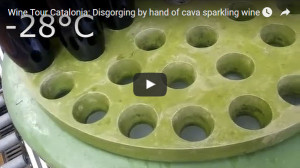 Many better sparkling wines have a second fermentation in the bottle. It is this second fermentation in the bottle that makes the wine bubbly. This is the method known as “the traditional method” methode traditionnelle. In the past it was called “champagne method” but the champagne producers did not like that others used that term so they managed to get it banned. Fermenting a second time in the bottle is often considered to make a better or more characterful wine. But of course, also a second fermentation in tank can make a good wine. Cava, Franciacorta and Champagne are some of the appellations that stipulate that the second fermentation take place in the bottle. In some areas it is optional, and the choice is then one of style.
Many better sparkling wines have a second fermentation in the bottle. It is this second fermentation in the bottle that makes the wine bubbly. This is the method known as “the traditional method” methode traditionnelle. In the past it was called “champagne method” but the champagne producers did not like that others used that term so they managed to get it banned. Fermenting a second time in the bottle is often considered to make a better or more characterful wine. But of course, also a second fermentation in tank can make a good wine. Cava, Franciacorta and Champagne are some of the appellations that stipulate that the second fermentation take place in the bottle. In some areas it is optional, and the choice is then one of style.
Read more on how you make champagne and other sparkling wines, including an illustrative video, in Per’s article on BKWine magazine: Disgorging sparkling wine – how to get the yeast out of the bottle.
Wine tours
Some information about current and future wine tours with BKWine.
Bordeaux, France’s most beautiful city | Wine Tour
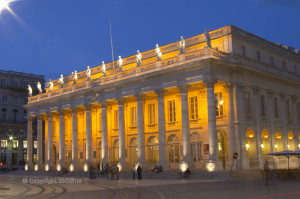 Bordeaux is one of France’s most beautiful cities. From being a town with narrow, winding alleys, Bordeaux was rebuilt in the 1700s with large, airy avenues. Stately houses and small private palaces were built along the quays, not least the magnificent Place de la Bourse. Also the beautiful opera house, Le Grand Théâtre, was built in the 1700s. In recent years, the cream coloured stone facades have been cleaned and renovated and the entire city has been shaped up. Not least, today there are several exciting wine bars, something of a rarity in the past.
Bordeaux is one of France’s most beautiful cities. From being a town with narrow, winding alleys, Bordeaux was rebuilt in the 1700s with large, airy avenues. Stately houses and small private palaces were built along the quays, not least the magnificent Place de la Bourse. Also the beautiful opera house, Le Grand Théâtre, was built in the 1700s. In recent years, the cream coloured stone facades have been cleaned and renovated and the entire city has been shaped up. Not least, today there are several exciting wine bars, something of a rarity in the past.
On our Bordeaux tours, we have the city of Bordeaux as our base. From here we easily reach Médoc, Saint Emilion, Graves and Sauternes. Late afternoon we are back in Bordeaux and you are free to go out and find restaurants and bars, maybe in the vibrant “Old Town”. A walk along the river at dusk is not so bad either. Our spring wine tour to Bordeaux takes place in May.
Tuscany: Is the food as important as the wine? | Wine Tour
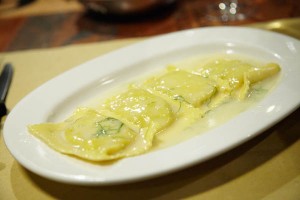 In Tuscany, on our wine tours, we spend time not only on the wine but also on the food. We do a cooking work-shop together with a skilled chef one morning. In Tuscany, the meal is important. You should sit down and eat together and the meal should take time. It may take time to cook the food too. A long-simmering ragu becomes a fantastic, flavour concentrated pasta sauce. The raw materials are important. A bruschetta is really delicious only if you use sun-ripened tomatoes and fine olive oil.
In Tuscany, on our wine tours, we spend time not only on the wine but also on the food. We do a cooking work-shop together with a skilled chef one morning. In Tuscany, the meal is important. You should sit down and eat together and the meal should take time. It may take time to cook the food too. A long-simmering ragu becomes a fantastic, flavour concentrated pasta sauce. The raw materials are important. A bruschetta is really delicious only if you use sun-ripened tomatoes and fine olive oil.
A half-day with cooking will give you many good insights into the Tuscan cuisine, not to mention new recipes and new inspiration! And you will be returning home with perhaps the most important knowledge of them all: that you only use the fork, never a knife, for the pasta…
Here’s how a wine tour to Tuscany can look.
3 Classics: Champagne, Chablis and Burgundy | Wine Tour
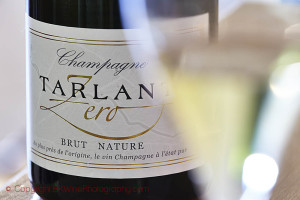 Champagne is a drink that comes from the Champagne district. This is a given for many. But still there are people who call all wines with bubbles champagne and when they mean the French stuff from the Champagne region they say “real” champagne. Champagne is a protected trademark in many countries (all of the EU for example). But Trump served a California Champagne at his inaugural dinner and that is in fact a totally legal name (in the US) although it makes the champagne producers see red.
Champagne is a drink that comes from the Champagne district. This is a given for many. But still there are people who call all wines with bubbles champagne and when they mean the French stuff from the Champagne region they say “real” champagne. Champagne is a protected trademark in many countries (all of the EU for example). But Trump served a California Champagne at his inaugural dinner and that is in fact a totally legal name (in the US) although it makes the champagne producers see red.
On this tour you will learn the importance of the origin for a champagne. Climate, weather, soils, the slopes, all this leaves its mark on the wine. Then you must add the wine producer and his particular style of course. There are always many different factors that determine how a wine tastes in the end.
Here’s how a wine tour “3 Classics” to champagne and Chablis and the Côte d’Or in Burgundy can look.
Volcanic wines: Sicily, focusing on Etna | Wine Tour
Sicily is the Mediterranean’s biggest island. Wine is grown all around the island. Most wineries are near the coast, but for example the well-known Tenuta Regaleali is in the centre of the island, in a dramatic, mountainous landscape. Etna, which is the focus of one of our Sicily wine tours, is located in the east. A little further south along the east coast is the city of Syracuse and not far away is Ragusa, famous not only for its wine but also for its fine tomatoes growing in the pink soil. Here they grow one of Sicily’s emblematic grapes, nero d’avola.
West on the island they make the famous sweet marsala wine. The vineyards are around the small port town of the same name. Outside Menfi in the southwestern part of the island we find Planeta, Sicily’s most famous wine family. They make wine everywhere on the island, including on Etna. Etna has a fantastic terroir, says the Planeta family. Their Etna Rosso 100% nerello mascalese and Etna Bianco 100% carricante is proof enough.
A wine tour to Sicily can focus on Etna, but can also have a broader scope as this sample program for a wine tour to Sicily shows.
Wine tours autumn 2017: new destinations and classics
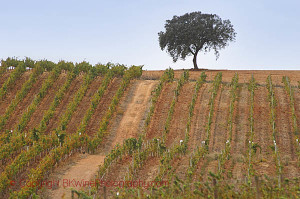 Our wine tours for the autumn 2017 are now available on bkwinetours.com. Don’t miss out! New tours this year is Piedmont (with truffles!), and a gastronomic experience as well as a wine tour to the exciting and dynamic Alentejo in southern Portugal.
Our wine tours for the autumn 2017 are now available on bkwinetours.com. Don’t miss out! New tours this year is Piedmont (with truffles!), and a gastronomic experience as well as a wine tour to the exciting and dynamic Alentejo in southern Portugal.
Bordeaux, 27 September – 1 October: For a wine lover it is a must to visit Bordeaux! On this trip we will visit magnificent chateaux as well as smaller family-owned estates. Particularly memorable are the stunning chateaux lunches.
Douro Valley in northern Portugal, 18-22 October: A wine tour with spectacular views. The landscape is dramatic. The grapes grow on incredibly steep slopes. We will get to know both the classic port wine and the modern, high quality table wines.
Piedmont, Wine, Food and Truffles, October 18-22: Gourmet tour to the Piedmont with Barolo, Barbaresco, and other exclusive wines, and the rare white truffle. We will also do some hands-on cooking workshop. With truffles…
Alentejo and Setubal, Portugal, 25-29 October: The wine tour to the dynamic Alentejo, with a visit to the Setúbal peninsula and the legendary muscatel wines. Alentejo is Portugal’s largest region and it is filled not only with vineyards but also with cork oak. This is in fact the world’s largest cork oak forest. The Wild Wine West of Portugal. Exciting!
Don’t be an egoist! Share with your friends and other wine enthusiasts! Forward the Brief to your friends! Suggest that they sign up for a free subscription !
© Copyright BKWine








